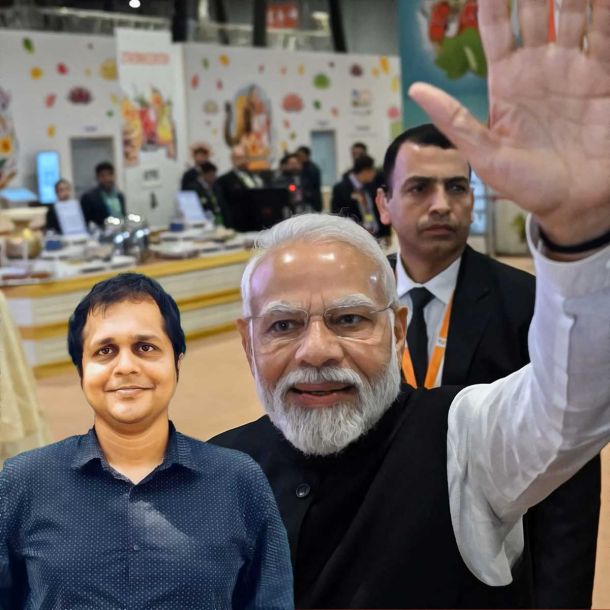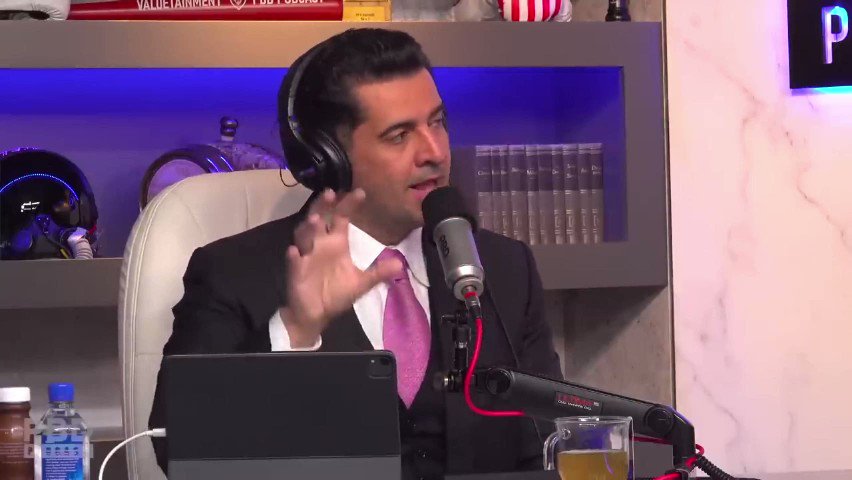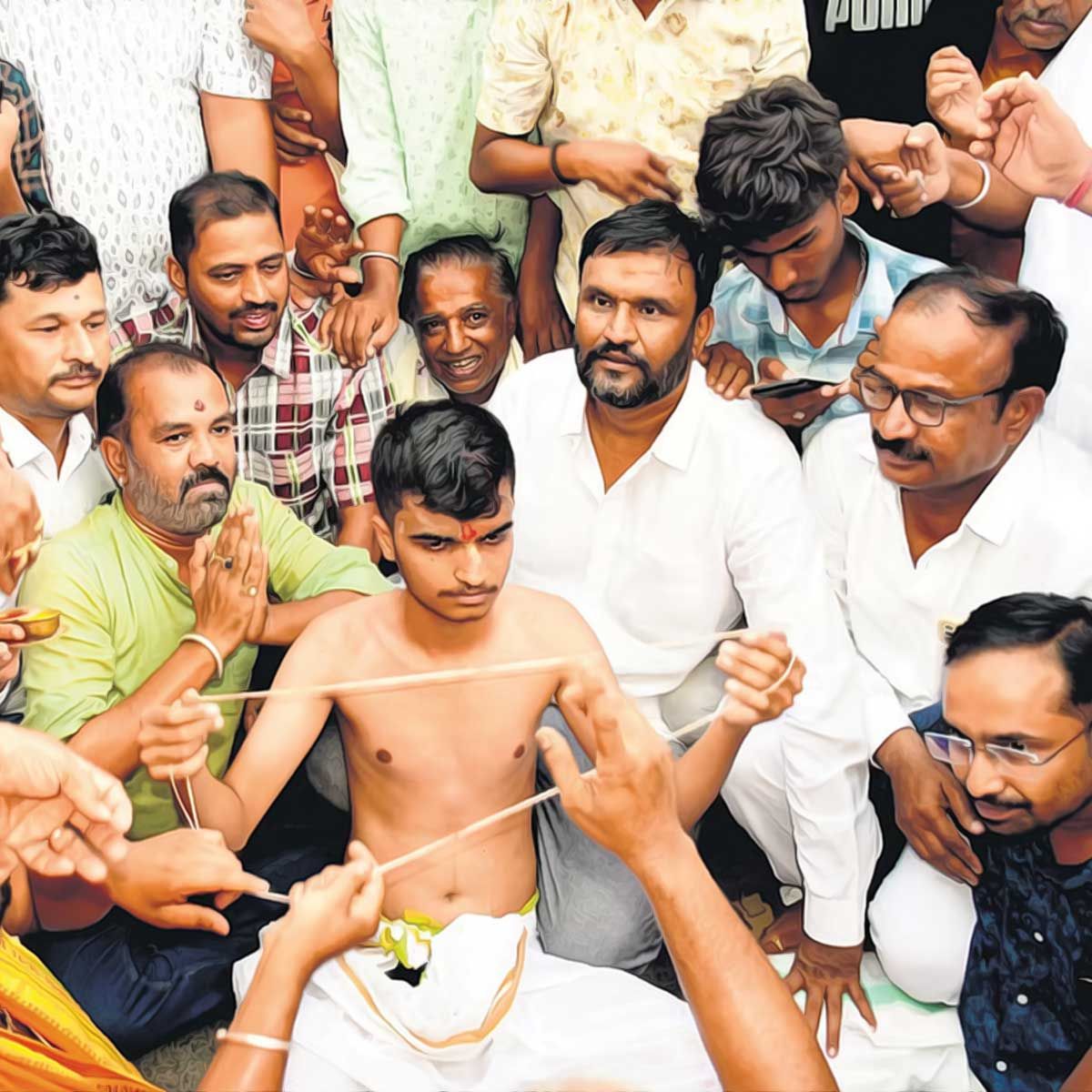More Coverage
Twitter Coverage
Satyaagrah
Written on
Satyaagrah
Written on
Satyaagrah
Written on
Satyaagrah
Written on
Satyaagrah
Written on
JOIN SATYAAGRAH SOCIAL MEDIA
"The fall of Madhuri Gupta": From a trusted diplomat in Islamabad to a convicted spy for Pakistan’s ISI—wasn't just betrayal, but a haunting reminder of how love, loneliness, and systemic cracks can sabotage a nation from within, leaving wounds unhealed

On 17th May, 2024, India was jolted by a chilling revelation: six individuals, including a YouTuber traveller named Jyoti Malhotra, had been arrested for allegedly leaking confidential and sensitive information to Pakistan. What made this revelation more alarming was Jyoti’s established link with operatives of Pakistan’s notorious intelligence agency, the Inter-Services Intelligence (ISI).
“Jyoti was in contact with Inter-Services Intelligence, or ISI, operatives.” This wasn’t just a case of occasional interaction. As reported, her entire travel to Pakistan had been facilitated by ISI itself, marking a high level of interest and coordination. Even more startling, she was accused of gathering sensitive information from regions within India and relaying them to these hostile operatives.
Her contact was identified as “Ehsan Ul Rahim, alias Danish, in the Pakistan High Commission in India.” Danish, a name unknown to the public until recently, was not just any diplomat. His identity was exposed as an ISI agent operating under diplomatic cover. “Danish was recently declared persona non grata and was asked to leave the country within 24 hours owing to his being an ISI spy disguised as a diplomat.” Such a step by the Indian government signifies the gravity of the breach and reflects the protocol followed when spies use diplomatic immunity to mask intelligence operations.
As news of Jyoti Malhotra’s arrest swept across the media, it inevitably brought back haunting memories of a past betrayal that left a lasting dent on India’s diplomatic establishment – the case of senior diplomat-turned-spy Madhuri Gupta.
Madhuri’s name resurfaced in discussions across newsrooms and intelligence circles. Once serving at the Indian High Commission in Islamabad, her actions had thrown India’s foreign service into deep embarrassment. Accused of unauthorised contact with Pakistani officers and leaking sensitive materials, her arrest was not merely an isolated act of treachery but a revelation of systemic oversight.
|
The Curious Case of Madhuri Gupta: An Insider Who Turned
It was during the hot days of April 2010 that India was forced to confront an unexpected reality – one of its own senior diplomats had crossed to the other side. Madhuri Gupta, aged 55 then, became the centre of an espionage scandal that rattled the foreign service. She was working at the Indian High Commission in Islamabad and was arrested under the grave charge of spying for the ISI.
This episode was particularly jarring as it unfolded “less than two years after the deadly 26/11 Mumbai attacks.” At that point in time, India’s relations with Pakistan were already fraught with tension, suspicion, and hostility. The idea that a mole had been living within the Indian diplomatic establishment and passing information from Islamabad—the very capital of the adversary—was more than alarming. It was devastating.
Madhuri Gupta’s story was not merely about classified files and intercepted calls. It evolved into something deeper and more complex. “Her story is not just about espionage. It is a tale that exposed the fault lines within India’s intelligence community.” Her arrest forced a moment of reckoning. The internal lapses, bureaucratic negligence, and lack of stringent surveillance created the perfect storm for someone like Gupta to operate undetected for months, if not years.
The media trial that followed presented her in conflicting lights—“a romantic fool, a cynical opportunist, or a pawn in a turf war between rival spy agencies.” These portrayals, whether harsh or sympathetic, revealed how fragile the public and institutional understanding of internal threats really was.
Her court proceedings dragged on for years. The trial, the evidence, the legal back-and-forth—everything seemed to recede into the shadows over time. Eventually, her conviction came, but her name and presence faded quietly, almost as if the country chose to forget. “Her trial, conviction, and quiet demise in obscurity raised difficult questions about internal vigilance and the complex workings of Indian diplomacy in hostile terrain.”
This article aims to re-examine her case not just through a legal lens but through the accumulated reports, court rulings, and journalistic narratives that attempted to piece together how and why Madhuri Gupta chose betrayal. From the first doubts to her eventual downfall, her actions remain a sobering reminder of the gaps within systems meant to protect the nation.
|
Who Was Madhuri Gupta?
Madhuri Gupta wasn’t a novice thrown into a hostile posting without preparation. “She joined the Ministry of External Affairs (MEA) in the early 1980s as part of the Indian Foreign Service’s Grade B cadre.” While not part of the top brass of diplomats, she was an experienced insider who had served loyally in various international postings.
Throughout her nearly 30-year-long career, she was posted in embassies and missions across Iraq, Liberia, Malaysia, and Croatia. Her proficiency in Urdu, a skill not common among diplomatic staff, was one of the key factors that led to her posting as the “Second Secretary (Press & Information) at the Indian High Commission in Islamabad in 2007–2008.”
While her title might have seemed senior, her actual work was rather mundane and administrative. “Her primary role was more about monitoring the Urdu press and compiling two daily dossiers interpreting media developments for senior Indian diplomats.” In essence, she acted as a translator and interpreter of Pakistani media content—hardly someone expected to be involved in matters of national security.
Still, proximity matters. Though she was not directly engaged in defence or confidential diplomatic dialogues, “she operated close enough to intelligence officials and high-level information flows to raise concerns once she came under the radar.”
Madhuri lived alone, never married, and maintained minimal ties back in India except for a brother who had settled in the U.S. During courtroom proceedings, she described herself as someone “a lover of her work.” She had academic inclinations, particularly in history and Sufism. She had even begun work on a PhD thesis on the Persian poet Rumi.
Her personality was a blend of intellectual curiosity and solitary resilience. This distinct combination earned her some respect and admiration in diplomatic circles. However, many also viewed her as aloof or eccentric. “The complex mix of seniority, access, and personal solitude made her both a vulnerable target for the Pakistani spy network to honeytrap.”
The fact that her case became so controversial was not just due to her espionage. It was also because parts of the media began to humanise her. While the judicial process was still underway, some presented her as a woman unfairly vilified, crushed under the weight of institutional and media narratives. “Her case soon became one of India’s most debated espionage cases, mainly due to the fact that she was presented as a victim by a section due to the severe media trial as the case remained sub judice.”
Early Warnings and Rising Suspicions
By the end of 2009, murmurs of concern began rippling through India's intelligence network in Islamabad. Although Madhuri Gupta held a relatively low-profile position within the Press and Information Wing of the Indian High Commission, something about her behaviour began to catch the attention of the country’s sharpest intelligence eyes. Her role was not expected to attract attention, but her increasingly close association with local journalists and Pakistani officials began to raise serious eyebrows.
“The first whiff of suspicion came to the fore in a quiet manner in late 2009.” These weren't dramatic accusations or loud alarms—just subtle irregularities that hinted something was off. Over time, these warning signs grew into concrete concerns. Gupta, whose job required her to observe and translate the local Urdu press, seemed to be operating beyond the boundaries of her assignment.
The Intelligence Bureau (IB), India's domestic counterintelligence agency, stepped in to take a closer look. “It was not routine monitoring that is carried out as a precautionary measure on Indian officials in sensitive postings.” What was happening now was a covert surveillance operation. Gupta’s name started appearing in internal memos and confidential assessments as someone possibly compromising sensitive material.
This suspicion turned more urgent when IB officers began detecting digital footprints—signals that she might be transmitting information out of the mission compound. “The IB reportedly intercepted communications and began deploying strategic countermeasures.” These were not assumptions anymore—they had started catching traces of her illicit activities in real time.
What followed next was an unusual and highly secretive gathering in early 2010. A high-level, confidential meeting was convened at the Ministry of Home Affairs in Delhi. In attendance were some of the most powerful figures in India’s intelligence hierarchy: “Head of the Research and Analysis Wing (R&AW), KC Verma; Director of Intelligence Bureau, Rajiv Mathur; and Home Secretary, GK Pillai.” Curiously, the then-Home Minister, P. Chidambaram, was not looped in. The reasons for his exclusion remain unclear to this day.
This meeting’s primary agenda was to discuss “a serious internal breach—a mole within the Indian High Commission in Islamabad: Madhuri Gupta.” Such was the sensitivity that even the Ministry of External Affairs—her parent department—was left out. The approach was to maintain maximum secrecy. There were “no written records or electronic trails”, and nothing that could risk tipping her off or exposing the operation to collaborators.
The intelligence officers crafted a clever plan. They began feeding Gupta with falsified intelligence—disinformation that could be traced if it showed up across the border. “If this disinformation made its way across the border and could be verified by Indian sources in Pakistan, it would confirm Gupta as the leak.” The trap worked like clockwork.
With her betrayal confirmed, the next challenge was logistical and diplomatic—how to bring her back to India without alerting anyone at the High Commission. The goal was to ensure no alarm was raised, no trail left, and no time given to her to destroy evidence or alert her handlers. “Secrecy was a necessity.” The stakes were high, and the execution had to be flawless.
|
What Exactly Did She Leak?
As the investigations progressed, a clearer picture began to form. According to court records made available through OpIndia, a formal chargesheet was filed by the Delhi Police Special Cell in July 2010. The evidence they had unearthed was damning. “Investigators recovered 73 emails, 54 sent and 19 received, from the Gmail address This email address is being protected from spambots. You need JavaScript enabled to view it..” The email account was not even hers—she claimed it had been set up by a Pakistani intelligence handler named Mubshar Raza Rana, a known ISI operative.
There was more. Gupta had reportedly developed a personal and possibly romantic relationship with another handler identified only as Jamshed, or ‘Jim’. He became her primary contact, the person who facilitated most of the data transfer. This dual manipulation—emotional and strategic—seemed to have deepened her involvement in espionage activities.
The contents of the recovered emails filled more than 300 printed pages. Within them lay personal and professional details of Indian High Commission staff in Islamabad—names, roles, schedules, and even hints at their potential ties to Indian intelligence agencies. “She was also accused of compromising the cover identities of R&AW officers, revealing internal assessments sent to the MEA, and even disclosing ‘possible secret routes to India.’”
These were not mere bureaucratic files. They had real-world implications for the safety and security of Indian diplomats working in a high-risk posting. While some media voices tried to downplay the sensitivity of the leaks, referring to them as mere “whisky-soda conversation”, the prosecution was clear and firm.
“The material was ‘sensitive and classified.’” That’s how the court received it, too. It acknowledged that while not every piece of data qualified as top-secret, the cumulative effect of the leaks could cause genuine harm. In Pakistan—where intelligence warfare is fierce—“even personnel data can be weaponised.” The ruling was unambiguous: “The emails were categorically sensitive and useful to the enemy country, and their secrecy was of utmost importance.”
In the world of espionage, the severity of a breach is not just about what is leaked but how it is leaked. Gupta’s patterns of access, the email trails, and her confession sealed the case against her. Whether the material stood in a grey zone between open-source interpretation and internal memos didn’t matter in the end. “The thing is, she leaked the information, and it was enough to sentence her.”
The Prosecution’s Narrative – Honeytrap and Betrayal
When the courtroom proceedings began, the prosecution laid out a narrative that left little space for sympathy. “The investigators painted a damning picture of her alleged betrayal.” According to them, Madhuri Gupta was not simply misguided or careless—she was willfully involved in an intelligence breach that had serious implications for national security. Her descent into espionage, they claimed, was not driven by ideology or money, but by a far more complex web: emotional manipulation.
“The prosecution argued that Gupta fell victim to a classic ISI honeytrap, an emotional entanglement that turned into active collaboration.” The man at the centre of this entrapment was someone she knew as Jamshed, or “Jim”. He was reportedly in his 30s—almost two decades younger than Gupta, who was in her mid-50s at the time. Far from being just another friendly acquaintance, he was “described as a trained operative tasked with cultivating Gupta for intelligence purposes.”
The prosecution brought forth key pieces of evidence, including a significant email dated 3rd October 2009, written by Gupta under the alias “Javeria” to her handler “Sultana”, later identified as ISI operative Mubshar Raza Rana. The email read like a personal letter filled with betrayal, regret, and anger. In it, she vented about her strained relationship with Jim. “Jim treats me like a dog… He has a strong objection to my socialising with any Pakistani. Why does he have such a poor opinion of his own people?” The email ended on a bitter note: “Tell Jim ki Pakistani ko aazma ke dekh liya.”
To the investigators, this message was more than just a lover’s quarrel. “The email confirmed both her emotional vulnerability and the depth of her involvement.” It painted a picture of a diplomat emotionally entangled with her handler, caught in the illusion of love, and willing to compromise her country’s security in exchange for affection, validation, and the false promise of marriage.
According to Special Cell Inspector Pankaj Sood, Gupta “confessed willingly, handed over passwords, identified both handlers, and revealed the extent of her cooperation.” This wasn’t the case of someone being manipulated blindly. The prosecution made it clear: she was informed, involved, and deeply invested in her actions.
Her BlackBerry device was another damning piece of evidence. It was configured to access the compromised Gmail account, from where all communication took place. Technical analysis of the device and its metadata confirmed regular correspondence with Pakistani contacts. Her actions weren’t occasional lapses in judgment; they were consistent and deliberate.
The betrayal, in the eyes of the court and investigators, was unforgivable. “Officials insisted the betrayal was particularly egregious not only because the information was leaked, but also because she had voluntarily compromised national security for personal gratification.” Her case emerged during a particularly tense period following the 26/11 Mumbai attacks, making the breach all the more serious.
In court, the prosecution didn’t just focus on espionage—it emphasized the emotional manipulation behind it. “The prosecution echoed the narrative that a senior diplomat was seduced by a foreign agent, not for ideology or money, but for love, or at least the illusion of it.” The narrative had shades of drama, but the stakes were real and national in scale.
|
The Defence’s Counter – Trivial Data and Vendetta
On the opposite side of the courtroom, a very different story unfolded. Gupta’s legal team refused to accept the honeytrap narrative. “Gupta’s defence team claimed she was a victim, not of a honeytrap, but of office politics and institutional vendetta.” She was not portrayed as a traitor, but as someone wrongfully accused by colleagues who disliked her.
Represented by Advocate Joginder Singh Dahiya, her defence was straightforward: Gupta simply did not have access to sensitive data. “He argued that she never possessed or accessed top-secret intelligence.” Her duties were limited and clerical, mostly restricted to translating Urdu media content and compiling briefings for higher-ups. “He pointed out that her job was limited to monitoring Urdu press and preparing summaries, and stated her role did not come with strategic clearance or involvement in defence-related affairs.”
Throughout the trial, Gupta maintained her innocence. She claimed she had been “framed by jealous seniors at the Indian High Commission, with whom she claimed to have strained relations.” According to her, it wasn’t love or money or ideology—it was workplace politics, professional jealousy, and personal grudges that had made her a target.
There were also murmurings of a deeper conflict at play. Her trial became a symbol of what many believed was a turf war between intelligence agencies. “Interestingly, her trial was also seen as symptomatic of an inter-agency turf war, where IB and R&AW rivalry may have played a role in magnifying her culpability.” The speculation gained traction when the name of R&AW’s station chief in Islamabad, RK Sharma, was leaked to the media just days after her arrest. Such a leak pointed to internal fractures—and possibly, a hidden agenda.
To her supporters, Madhuri Gupta became more than just a woman accused of espionage. She was seen as a scapegoat, someone who paid the price for internal rivalries and institutional dysfunction. “While her supporters continued to claim she was a scapegoat, a soft target caught in a high-stakes battle, punished for who she was rather than for what she actually did,” the legal arguments painted her as a person victimised by a broken system.
But despite all these claims, “the reality remained the same. She leaked sensitive information on the pretext of having an emotional bond with an ISI spy.” The facts stood firm in the eyes of the court. The leak happened. Whether caused by love, loneliness, politics, or manipulation—India’s secrets had crossed borders.
Judgment Day – Charges, Conviction and Sentencing
As the long and complex case against Madhuri Gupta proceeded through the legal system, the Indian judiciary found that there was enough material to formally initiate charges. “Gupta was, prima facie, found to have sufficient material to frame charges against her for the offences punishable under Section 120-B IPC and Section 3(1)(c) of the Official Secrets Act.” These were serious charges, and if proven guilty, Gupta faced a maximum prison sentence of three years.
But this was only the beginning. The matter soon became more complicated when “the January 2012 order by Patiala House Court, New Delhi, was challenged in the Delhi High Court by the State.” The prosecution was not satisfied with the lesser charge. They argued that Gupta should have been booked under the first part of Section 3(1) of the Official Secrets Act, which allows for a 14-year sentence, not just three years. Despite the charges already being heard in the trial court, Madhuri continued to claim innocence and requested a full trial to defend herself.
While the High Court admitted the State’s petition, the case proceeded at a sluggish pace. Gupta’s defence team highlighted procedural delays and loopholes. They questioned the strength of the evidence and pointed out that there was “a lack of technical proof directly tying her to the emails.” Her lawyers also stated that her confession was not entirely voluntary and could have been obtained under pressure. Moreover, the long duration of pre-trial custody was used as a reason to demand relief. On the other hand, the prosecution remained firm. “The prosecution stood by the sessions court’s findings and maintained that the sentence, although light compared to the gravity of the act, was just.”
Years went by with numerous adjournments. Finally, in January 2016, a key development occurred. “Justice Pratibha Rani partly allowed the State’s revision plea against a lower court order.” The main dispute was about the seriousness of the charge. Earlier, the trial court had chosen to charge Gupta under the less severe provision of Section 3(1) Part II of the Official Secrets Act. This came with a lighter maximum punishment of just three years. But the State pressed for the graver charge, citing sensitive emails that supposedly related to India's security.
The Delhi High Court sided with the State’s reasoning, stating that the trial court had overstepped in evaluating the evidence so deeply during the early charge-framing stage. The High Court ruled that “the material on record was sufficient to frame the graver charge” and that further assessment should be left to the trial process. Thus, it set aside the earlier order in part and ordered that Gupta be charged under the more serious legal section.
However, the trial itself was allowed to continue. Importantly, Gupta was not stripped of her rights. “The High Court allowed it to continue with the amended charge and ensured that Gupta would have a fair chance to cross-examine witnesses again, if needed.” The State also gave an assurance that her bail would not be cancelled just because of the new, harsher charge.
After nearly a decade of proceedings, the final judgment was announced. On 18th May 2018, Additional Sessions Judge Sidharth Sharma of Patiala House Courts declared Madhuri Gupta guilty. She was convicted under Section 3(1)(c) Part II and Section 5 of the Official Secrets Act, 1923, along with Section 120-B IPC for criminal conspiracy. However, the most severe charge—Section 3(1) Part I, which allowed for a 14-year term—was not upheld, as the court concluded that the leaked information “did not pertain directly to defence operations.”
The sentencing took place the next day, 19th May 2018. Gupta received “three years of simple imprisonment, the maximum allowed under the specific provisions invoked.” The two sentences under the Official Secrets Act were set to run concurrently. Furthermore, she was granted the benefit of Section 428 CrPC, meaning her previous custody period of over 20 months between 2010 and 2012 would count toward her total sentence.
In his remarks during sentencing, Judge Sharma didn’t mince words. “Undoubtedly, from a person of her stature, it was expected that she would act in a more responsible manner than an ordinary citizen… her action has tarnished the image of the country and has caused severe threat to the security of the country.”
Gupta’s appeal for a lighter sentence, in which she cited her age, loneliness, and the possibility of losing her pension and retirement benefits, was firmly rejected. The judge emphasized that someone who had cleared a UPSC-level examination and held sensitive diplomatic roles should have had a much higher sense of duty.
Still, the court recognised her right to appeal. It allowed Gupta to stay out on bail, provided she submitted a personal bond and surety bond of ₹25,000 each. Her sentence was suspended for 30 days to give her time to approach the Delhi High Court.
As expected, Madhuri Gupta filed an appeal in the Delhi High Court soon after her sentencing. On the very day her punishment was announced—19th May 2018—the trial court had officially suspended her sentence for 30 days, enabling her to take the next legal step.
She complied with court directions and furnished the necessary bonds, remaining on bail while her appeal was under review. The Delhi High Court admitted her petition, but once again, the wheels of justice moved slowly. The already sluggish case was further delayed when the COVID-19 pandemic struck. As with many pending cases across the country, courtrooms were shut, hearings were postponed, and legal processes were suspended for months.
|
The momentum that was once built toward a final resolution gradually faded.
Death That Buried the Espionage Case Forever
In an unremarkable corner of Bhiwadi, Rajasthan, the story of Madhuri Gupta reached its quiet and final end. In October 2021, the woman whose name had once rocked the diplomatic world of India died in obscurity, alone.
There was no formal statement from the Ministry of External Affairs. No ceremonial farewell. No headlines. Her longtime friend and legal representative, Joginder Dahiya, confirmed her death—but only days later, when he received a phone call from Gupta’s brother, who lived in the United States. Even in death, Madhuri Gupta remained distant from the system she had once served.
“With her death, the legal process came to an end, and no final pronouncement was delivered by the Delhi High Court on her appeal.” There would be no final verdict, no closure in the legal sense. “In the absence of a definitive ruling overturning or upholding the conviction, the trial court’s findings remained officially uncontested.”
And just like that, the espionage case that once gripped India’s diplomatic and intelligence corridors slipped quietly into history—unresolved, unfinished, and largely forgotten.
The Shadow War – IB vs R&AW Turf Battle
The espionage case involving Madhuri Gupta not only revealed a deep betrayal at the diplomatic level, but it also exposed a silent turf war brewing between India’s top intelligence agencies—the IB and R&AW. It was not the legal documents that made this rivalry evident. It was the chaos in the headlines that brought this internal fault line into public view.
“Mere days after Gupta’s arrest in April 2010, the name and designation of RK Sharma, India’s R&AW station chief in Islamabad, were leaked to the press, effectively blowing his cover.” This shocking breach of protocol put a critical Indian intelligence officer in danger. To this day, no one knows how his identity reached the media. But one thing was clear—communication gaps and mistrust between the agencies had reached a boiling point.
Insiders from the intelligence community, as reported by multiple media houses and confirmed by former officers, revealed that the Gupta case had been handled almost entirely by the Intelligence Bureau (IB). The Research and Analysis Wing (R&AW)—India’s external spy agency—had been “kept out of the loop until the very end.” IB had been tracking Gupta for months, conducting discreet surveillance and gathering digital trails. Meanwhile, R&AW’s local team was allegedly sidelined, even though they too may have had their own alerts or evaluations regarding Gupta’s behaviour.
This kind of isolation led to duplication of efforts and wasted resources. “This lack of inter-agency trust, insiders claimed, resulted in parallel information streams and duplicated surveillance, a dangerous inefficiency in an adversarial environment like Islamabad.” When agencies fail to communicate in high-risk zones, the consequences are more than bureaucratic—they are dangerous.
The case became even more tangled when IB’s Press and Information Officer in Islamabad, Sanjay Mathur, was accused of introducing Gupta to Javed Rasheed, a journalist reportedly connected to ISI. However, these accusations did not hold up in court. Still, Mathur’s sudden recall from Pakistan and the secrecy surrounding his departure stirred suspicion.
Then came the collateral damage. “RK Sharma, the senior R&AW officer, became collateral damage of the case.” Without solid proof of any wrongdoing, he found himself entangled in the fallout of the situation. A compromised mission, a fractured trust between agencies, and the exposure of internal battles—all these were the invisible scars that the Madhuri Gupta case left behind. It was not just about one woman leaking secrets. It was about a system cracking under its own weight.
Media Circus
Espionage cases naturally attract attention, but Madhuri Gupta’s case triggered a relentless media storm. The involvement of a senior diplomat posted in Pakistan, passing sensitive data to the enemy, was bound to stir up national outrage. “In a country already reeling from cross-border terrorism and espionage threats, the public had every right to know the identity of the insider who had compromised national security.”
The media wasn’t content with just reporting the facts. “Her personal and professional life became a topic of research for the media houses.” From her clothing preferences to her taste in literature, everything was picked apart. Channels fought to break the next “exclusive.” She wasn’t just a story—she was the perfect headline. “An ageing diplomat, fluent in Urdu, honeytrapped by the enemy, and accused of leaking classified Indian assessments.”
But this intense media interest also gave Gupta’s sympathisers a platform. Some tried to flip the narrative—turning her from traitor to victim. It became a tug-of-war between two extremes: those who saw her as a selfish betrayer, and those who saw her as a pawn caught in political games.
Despite the noise, one fact remained unchanged. “Madhuri Gupta was not an innocent caught in the crossfire. She confessed to knowingly transmitting sensitive information to agents of a hostile nation.” The coverage may have been harsh, but the scrutiny wasn’t baseless—it reflected the seriousness of her betrayal.
In the minds of many Indians, Gupta's actions represented more than a single act of treachery. “In the public imagination, Gupta came to symbolise something far deeper than a lone mole.” She became a warning—a reminder that when trust is broken from within, it cuts deeper than any external threat.
Larger Questions on Security, Secrecy and Surveillance
The espionage saga didn’t just end with Gupta’s conviction or even her quiet death—it left behind troubling questions about the state of India’s internal security architecture.
The betrayal by someone placed within the secure diplomatic compound of the Indian High Commission in Islamabad pulled back the curtain on how fragile these systems can be. “It exposed the complex challenges of internal security management, particularly in missions posted in adversarial territories like Pakistan.” While her actions were undoubtedly her own fault, they revealed something larger—a crack in the framework that was supposed to catch threats before they became dangerous.
The most striking part of the case was how long Gupta operated undetected. “She operated a private email, maintained unsanctioned relationships, and transmitted sensitive data over months before being brought under formal scrutiny.” This wasn’t just a one-time slip. It was a repeated failure to monitor, detect, and intervene. Even in a high-risk environment like Islamabad, there were loopholes big enough for secrets to slip through.
However, it’s important to acknowledge that there has been change. “So-called intelligence failures have dropped dramatically over the years, particularly after Prime Minister Narendra Modi assumed office in 2014.” The central government is understood to have pushed for greater cooperation among intelligence units, encouraged technological upgrades, and promoted more integrated security practices.
Though official data remains classified, the response to later national security threats indicates that lessons from the Madhuri Gupta case were not ignored. Yes, there have still been some unfortunate incidents, and yes, mistakes have occurred. But intelligence agencies today seem more prepared and more unified, especially on issues where they must work as one.
“Overall, the agencies appear to be moving on the path where they can at least work together on cases where they are equal stakeholders.” That alone marks progress—a step away from turf wars and a move toward shared national security.
A Tale of Ambition, Weakness and National Cost
The Madhuri Gupta story will forever be remembered not just as a betrayal but as a layered tragedy—of personal weakness, institutional failure, and national consequence.
“The Madhuri Gupta case is not about an official’s betrayal. It is more about a convergence of personal ambition, emotional vulnerability, and institutional oversight failure.” At a time when India needed unity and strength in its diplomatic missions, a senior officer chose to put her trust elsewhere—for reasons only she could truly understand.
Her motivations may have included love, loneliness, attention, or bitterness—but none of them could excuse her actions. “Whatever the motivations were, love, bitterness, or attention—the ultimate truth is her actions were against India.” The damage done can’t be measured just in emails or leaked summaries. The real cost lies in the fractured trust, the weakened morale, and the doubt it planted in the minds of many.
“The national cost of such betrayal cannot be measured solely in documents leaked or diplomatic damage caused. It lies in the internal erosion of confidence, the strain on inter-agency trust, and the public’s shaken faith in the integrity of those who serve abroad.”
Her death in October 2021—unnoticed, unremarked upon by the ministry she once represented—put an abrupt full stop to what could have been a landmark legal case.
“Her untimely, quiet death put a plug on a loud and important case rather abruptly. It would have been better if the case had followed due course in the higher courts and the people of India could have had at least one definite closure.”
Instead, the story of Madhuri Gupta remains unfinished—a warning that vigilance must be as much inward as it is outward. Trust must be earned, maintained, and never assumed.
 Support Us
Support Us
Satyagraha was born from the heart of our land, with an undying aim to unveil the true essence of Bharat. It seeks to illuminate the hidden tales of our valiant freedom fighters and the rich chronicles that haven't yet sung their complete melody in the mainstream.
While platforms like NDTV and 'The Wire' effortlessly garner funds under the banner of safeguarding democracy, we at Satyagraha walk a different path. Our strength and resonance come from you. In this journey to weave a stronger Bharat, every little contribution amplifies our voice. Let's come together, contribute as you can, and champion the true spirit of our nation.
 |  |  |
| ICICI Bank of Satyaagrah | Razorpay Bank of Satyaagrah | PayPal Bank of Satyaagrah - For International Payments |
If all above doesn't work, then try the LINK below:
Please share the article on other platforms
DISCLAIMER: The author is solely responsible for the views expressed in this article. The author carries the responsibility for citing and/or licensing of images utilized within the text. The website also frequently uses non-commercial images for representational purposes only in line with the article. We are not responsible for the authenticity of such images. If some images have a copyright issue, we request the person/entity to contact us at This email address is being protected from spambots. You need JavaScript enabled to view it. and we will take the necessary actions to resolve the issue.
Related Articles
- "What a network": For a withheld tweet of Washington Post columnist Rana Ayyub, she gets support from several ‘journalists’, ‘activists’ and ‘prominent personalities’, people linked to George Soros and his funded Open Society stood out from crowd
- Saba Naqvi infers that re-settling Kashmiri Pandits in the valley decades after the genocide was perpetrated against them by Islamic terrorists is a part of the ‘Hinduisation’ project: Mirrors Jihadis and Islam extremists
- "Ship in port is safe, but that's not what ships are built for": Deep-water, multipurpose, international seaport and container transshipment terminal at Vizhinjam that will compete with Colombo, Singapore and Dubai meets Church-led protests in Kerala
- Jawaharlal Nehru University A Centre Of Excellence, But It Must Get Rid Of The Anti-National Forces: JNU at At A Dangerous Inflection Point
- "In PUBG, expect the unexpected": Love or espionage? The tangled web of threats, cross-border love and possible spy games unfolds as Pakistani Seema Haider's illegal entry into India raises international alarm and incites dire threats from her home tribe
- "Academic Ambition or Anti-National Agendas": The arrest of ISIS-linked students at AMU, including Faizan and Abdul, raises critical concerns about radicalization in educational institutions, challenging India's approach to campus security and ideology
- Param Bir Singh misused his power and authority in Kesab's inquiry and destroyed his phone: Shocking claims of former ACP
- Sukhdool Singh, a notorious gangster listed by NIA assassinated in Canada, highlighting the growing web of Punjab's criminals overseas, as India's concerns rise, the spotlight turns to Canada's stance on sheltering such elements from Punjab's underworld
- Knowing no boundary for hate, liberals descended on social media platforms to celebrate the death of legendary singer Lata Mangeshkar, calling her a ‘fascist’ and a ‘vile sanghi’
- The former RAW officer claims that Ex Muslim Vice President Hamid Ansari while serving as an Indian Ambassador to Iran exposed the RAW set-up in Tehran endangering the lives of RAW unit members
- "जालसाज": ABC News 'journalist' Avani Dias, known for her visa cancellation fiction drama, now misrepresents India's Constitution, falsely claiming 'secular' was included in 1947, though it was Indira Gandhi who added it in 1976 amidst her emergency-era
- "When the ink reveals more than the words": Over 255 prominent Indian citizens wrote to President of India and CJI urging for a thorough inquiry into NewsClick's suspicious funding from Neville Roy Singham, a figure connected to Chinese media machinery
- "Daggers wrapped in silk, striking with a smile": Decoding the enigma of Rahul Gandhi's 'mysterious trip' to Uzbekistan - a comprehensive chronicle of his discreet foreign jaunts, rendezvous with anti-India figures, and advocacy for external meddling
- "It's the oldest question of all, Doval. Who can spy on the spies?": 1988 batch Senior IPS officer Ravi Sinha appointed as the new chief of RAW, he has been with intelligence agency for over two decades and worked extensively in Jammu and Kashmir earlier
- "Unauthorized and illegal forum": TISS Mumbai bans the Progressive Students Forum (PSF), accused of misleading students, obstructing the institute's operations, creating divisions among students and faculty, & defaming the institute, per Prof. Anil Sutar




























